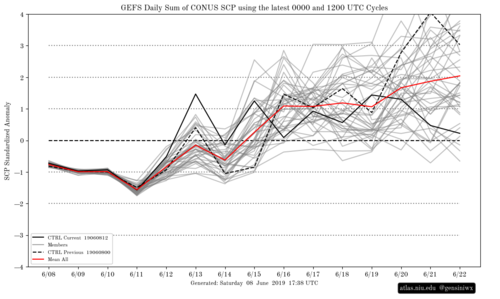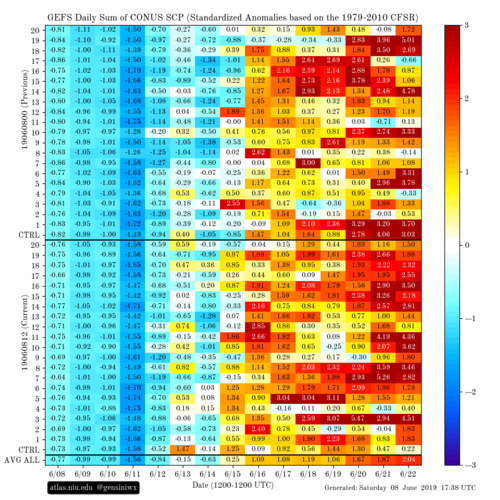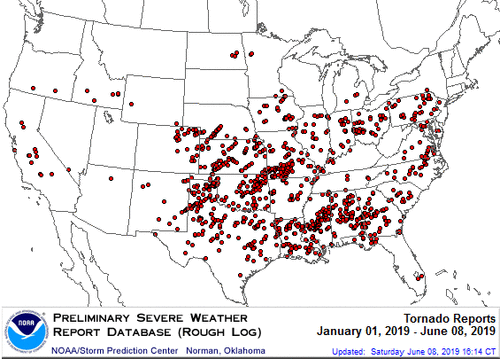I, too, would be interested to hear any updated thoughts from subseasonal experts on the mid-late June time period. While a short break is typical following a stretch like we saw in mid-late May, the duration of generally extremely unfavorable tornado conditions stretching from late last week into at least early next week is frustrating. It takes very little in June to produce at least localized favorable/targetable conditions, particularly with the upslope regime in CO/WY. Only a complete lack of upper flow, or an unseasonably strong northerly component to the flow (i.e., major eastern troughing), can really shut down the Plains this time of year. Of course, we're now in the midst of a 10-14+ day stretch featuring periods of both.
The frequency of quiet Junes this decade has to be concerning for chasers who long for the high CAPE/low shear, northern biased, less crowded, endless string of opportunities this period of the spring traditionally offers. It's really a shame, because this is when we often see all the conditions that maximize chasers' wishes while minimizing the attendant risk to public safety. I decided to re-run my chase season scoring script with data through 2018 to get one perspective on how June has performed from a
tornado-day-focused perspective.
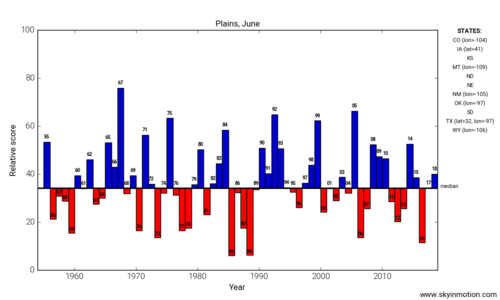
For the entire Plains, Junes in the 2010s have not been especially terrible; though certainly not great.
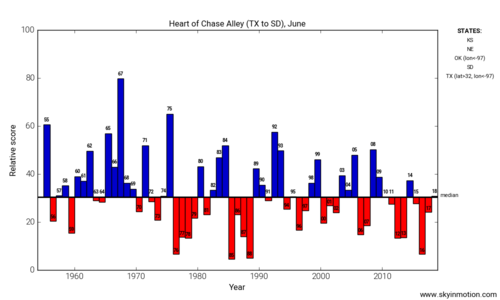
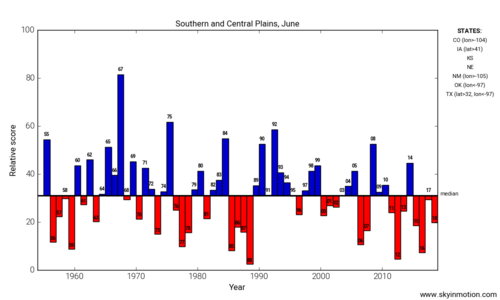
When focusing east of the upslope regime ("Heart of Chase Alley") or from NE/IA southward, it has been pretty bad, with only the late 70s-late 80s being comparably bad. 2010 and 2014 have really been the only memorable Junes where the span from KS to ND/MN saw numerous good days. It would be interesting to hear from more seasonal/climate-focused researchers and mets whether any oscillations on the decadal timescale could plausibly explain why the late season has generally been subpar recently.
All that said, June 2019 still has time for recovery starting in 7-10 days, though I wouldn't call the ensemble signal at that range right now especially exciting. All we really need is 30-40 kt of zonal flow at 500 mb cutting across the Plains somewhere, though, so we're likely to manage that sooner or later. Even in the meantime, there could no doubt be some needles in the haystack in the coming days -- and anyone willing to drive more than a few hours for these setups will have earned their prize, that's for sure!




